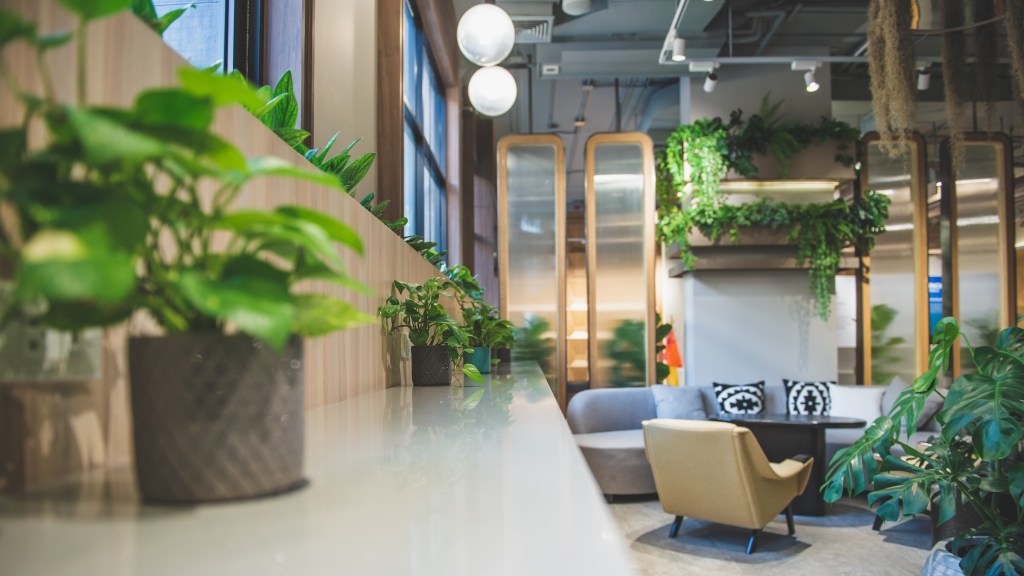As resident expectations evolve, flexibility has become a strategic imperative for multifamily operators. Whether it’s adapting amenity spaces for focused work or offering leasing terms that reflect shifting lifestyles, today’s communities must be built with change in mind. To meet these needs, operators are rethinking not only how space is used, but how their communities can flex with resident lifestyles—physically, digitally, and even contractually.
Changing Dynamics of Living and Working Spaces
The impact of remote work on daily routines means individuals have traded in their daily commutes for the comfort of their living spaces, leading to a demand for amenities that cater to both work and leisure. Multifamily operators are responding to this shift by rethinking how amenities are utilized.
Residents don’t always want to spend their entire day sitting in the same space where they work and live. Anyone who works at home can tell you that it’s nice to have a change of scenery. Libraries and coffee shops offer an alternative, but their convenience isn’t always an option. Coworking spaces for rent can also offer a break from home, but they may not fit into the budget of remote or hybrid workers. This is why coworking spaces have emerged as a vital amenity.
Gone are the days when communal areas were merely places to gather. They are now being transformed into multifunctional hubs. Property managers are optimizing these spaces for productivity, incorporating features like high-speed internet, meeting rooms, and comfortable seating arrangements that inspire collaboration and creativity.
These dedicated areas provide a professional atmosphere for residents when they need to focus on work without the distractions of home. Residents enjoy having the option to step out of their apartment and almost immediately into a fully equipped office space that’s close by, complete with high-speed Wi-Fi and collaborative workstations. It’s this blend of living and working that sets modern multifamily communities apart from their competition.
Acacia Capital, which oversees more than 12,000 units across over 40 properties, focuses on operating West Coast properties and takes a close look at the culture and people of each community before select clubhouse renovations take place. This approach dictates how the firm will design its amenity spaces.
“Property renovations typically include enhanced common area amenities and remote workspaces, which are in high demand right now,” explained George P. Dobbel, Acacia’s vice president of asset management. “We have residents who might have roommates or family with them throughout the day, making it more difficult for conducting online meetings, so we’ve added private workspaces with optimal acoustic properties.”
Flexibility in Leasing
Providing flexibility for residents goes beyond the physical amenities and includes being more open when it comes to leasing terms. This is one of the approaches taken by CRC Property Management (CRCPM), which has a portfolio of properties across 13 states with a wide range of leasing options. Prospects have the option to choose 13-, 16-, 21-, or 24-month leases, which offer them better assurances of what they’ll be paying in rent for up to two years.
“We’ve actually found that flexible lease terms is one of the preferred incentives we’re seeing at the local, regional, and national levels,” said Jamen Miller, president of property management at CRC. “We believe that by providing flexibility on the longer side of the spectrum, we’re giving a benefit that residents truly appreciate and value. We’re seeing that play out in our renewals and the new leases that we’re getting within our community.”
Innovative Amenities for Modern Residents
In today’s multifamily living spaces, technology plays a crucial role in enhancing convenience. More and more residents are embracing smart-home features, which enable them to manage lighting, temperature, and access control, all tailored to their preferences. This kind of personalization boosts comfort and provides the added benefit of energy savings, benefiting both residents and property owners alike.
With more residents working from home, even part-time, property owners might also face a situation where parking in the community might be more of a challenge. The easiest way to address this without burdening on-site teams is through an automated parking solution. This allows residents and their guests to reserve parking spaces and handle any illegal parking on their own. The appeal of technology for residents goes beyond convenience to include empowerment in how they live their daily lives.
Communities can also appeal more to residents by looking at what they’re providing when people want to unwind. Acacia makes it a point to understand what will appeal to residents for relaxation, and connection, including rentable space and grills in the pool area, cabanas and more.
“We set up our clubhouses to be user-friendly, with comfortable seating areas, private spaces and refreshment areas,” Dobbel added. “When we renovate, we look at what amenities are the most important to meet the needs of our residents.”
The Future of Multifamily Living
As they look to the future, the multifamily sector must remain adaptable. The integration of technology in shared spaces will continue to evolve, with new solutions emerging to meet the demands of residents. Property managers must be proactive in exploring creative strategies that enhance the living experience.
For instance, incorporating outdoor spaces that promote wellness and social interaction can significantly improve resident satisfaction. Green roofs, community gardens, and outdoor lounges are just a few examples of how properties can foster a sense of community while also providing residents with a peaceful retreat from their busy lives, especially when working from home.
The evolving landscape of multifamily living presents both challenges and opportunities for property owners and operators. By embracing the trends of remote work and technological integration, they can create vibrant communities that cater to the diverse needs of modern residents. The demand for flexibility and innovation is here to stay, and those who adapt can greatly enhance resident satisfaction and position themselves as leaders in the multifamily market.
